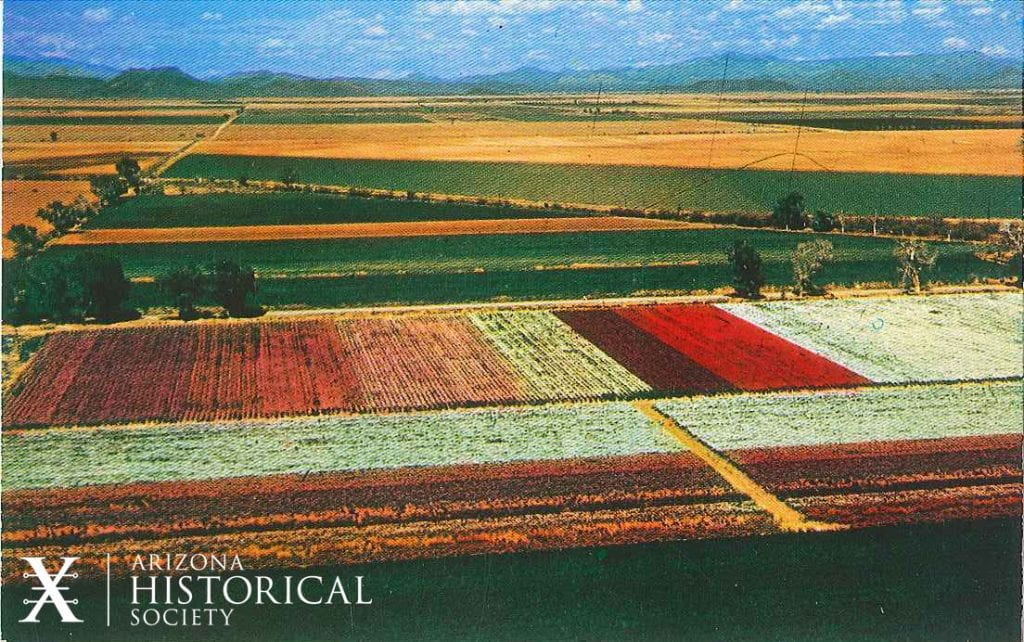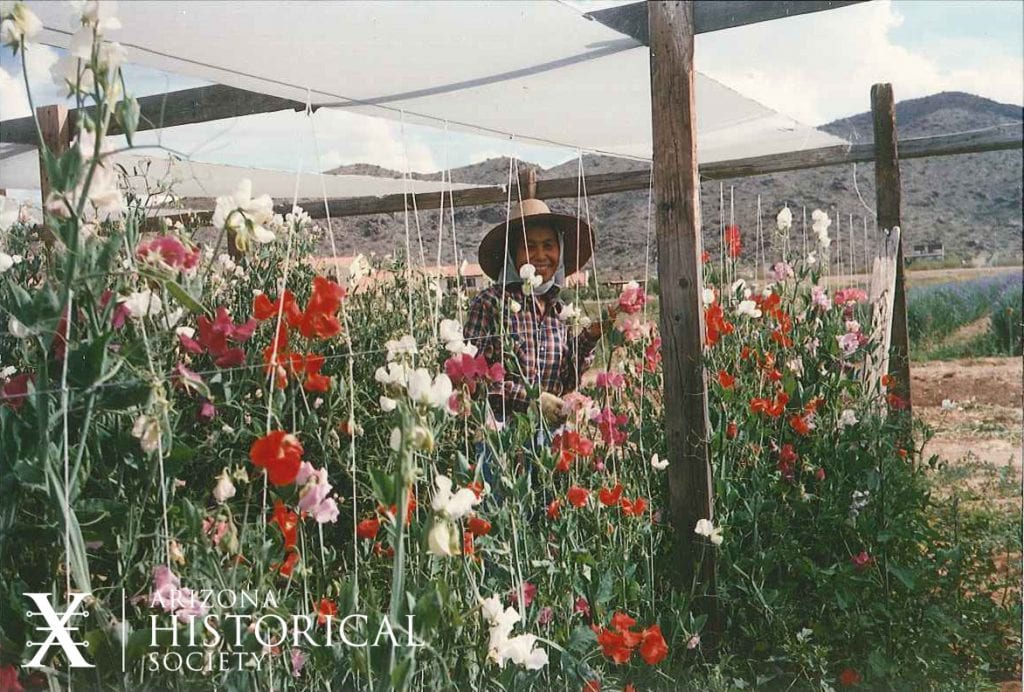
Aerial view of the colorful flower fields that lined Baseline Road for decades. AHS Collections. #100-0002779
As early as 1905, Japanese immigrants moved to Arizona with the intent to farm the land. They first planned to establish a sugar beet farm; but this crop would fail to thrive in the heat, and many Japanese farmers left the state by 1915. Despite the difficulty, new farmers continued to arrive, including Kajuro Kishiyama and his family, who immigrated in 1928. Kishiyama farmed tomatoes, summer squash, cucumbers, and watermelons and acquired a local reputation as the “Tomato King.” The Kishiyama’s became so successful that their landlord grew jealous and evicted the family and confiscated their crops, forcing them to find new land. Undaunted, Kajuro Kishiyama moved his family to the base of South Mountain in 1936 and started over.

A unique microclimate at the base of South Mountain made a perfect home for miles of flower gardens. AHS Collections, #100-0002780

A sign from the South Mountain Flower Gardens listing flower prices in Japanese and English. AHS Collections, P2015.17.19. Click to enlarge.
Three years later, another prominent Japanese farming family, the Nakagawa’s, started a flower farm across the street from the Kishiyama’s. Long considered unfarmable, boulders and rocks scattered the soil and had to be removed by hand before the ground was plowed. Once the fields were cleared, the area was found to be excellent for their crops. The mountain created a down draft that kept the warm air on the ground and protected the crops. Noticing that neighbors were experimenting with growing flowers, the Kishiyamas and Nakagawas joined them and experienced success with large flower fields.
In 1942, their lives were abruptly interrupted by Executive Order 9066, which forced Japanese Americans to sell or abandon their land and possessions and report to a government internment camp. The Kishiyamas, Nakagawas, and other local Japanese Americans were interned in the Gila River Internment Camp in southern Arizona. When they were finally released and allowed to return to their farms at the end of World War II, they found their lands ransacked and were forced to start again.
However, despite the interruption to their lives and the destruction to their lands, the Kishiyamas, Nakagawas, and multiple other families recreated thriving flower farms by the early 1950’s. For almost three decades, the Japanese flower farms acted as a colorful oasis in the middle of a rapidly urbanizing Arizona capitol. Every spring, tourists traveled miles to drive past the fields, smell the flowers, and purchase beautiful bouquets. At their height, the farms collectively shipped 259 boxes of flowers a day across the nation.
Now, the original flower fields are replaced with suburban housing. In 2006, the Kishiyama family sold the last of the flower fields. Baseline Flower Growers, the Nakagawa’s shop, is still open, selling flowers imported from South America and California. Though the flowers no longer fill Baseline Road’s 16-block stretch from 48th street through 32nd street, they still exist in photos and the memories of millions of Phoenix residents.

A woman caring for flowers at Nakamura Farms at the base of South Mountain. AHS Collections.
#100-0002778
Becca Morrison
AHS Collections Intern Summer 2020



